Weekly Watch Photo – Grönefeld One Hertz
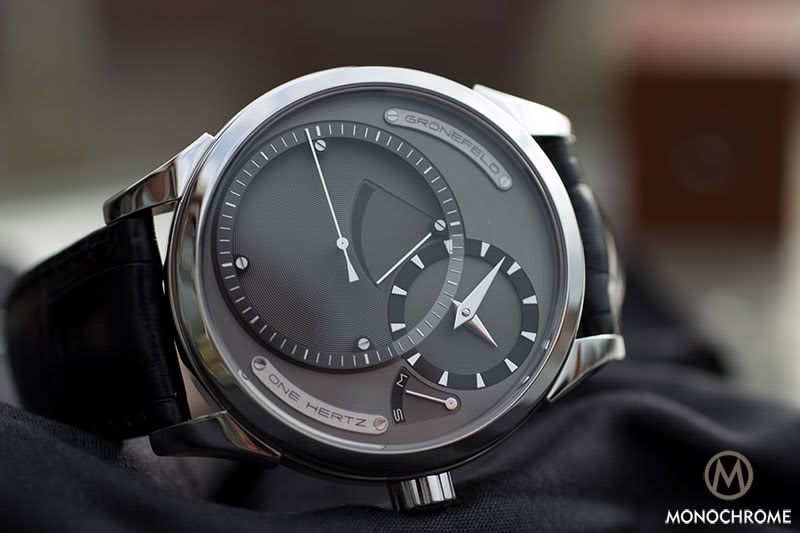
To start off the new year in style we show you some photos (and try to explain) of one of our favorite watches, the Grönefeld One Hertz. Recently we had the chance to make some photos of the very last piece in stainless steel.
But rest assured, although the to 12 pieces limited One Hertz 1912 has been sold out, there is also the One Hertz Dune and I’m curious to see this year’s novelty. We’ll have to wait until Baselworld to see the new Grönefeld timepiece, but now we can enjoy some photos of an absolutely gorgeous timepiece!

One of the things that’s so striking about the One Hertz, is that it isn’t a beginner’s watch. Most people who are ready for their first expensive watch, probably have a hard to to come to term with the seconds hand that ticks like a quartz watch. Although this watch is technically so much more interesting than watches from the same price range with a sweeping seconds hand. Why? Well, the answer can be seen through the display back.
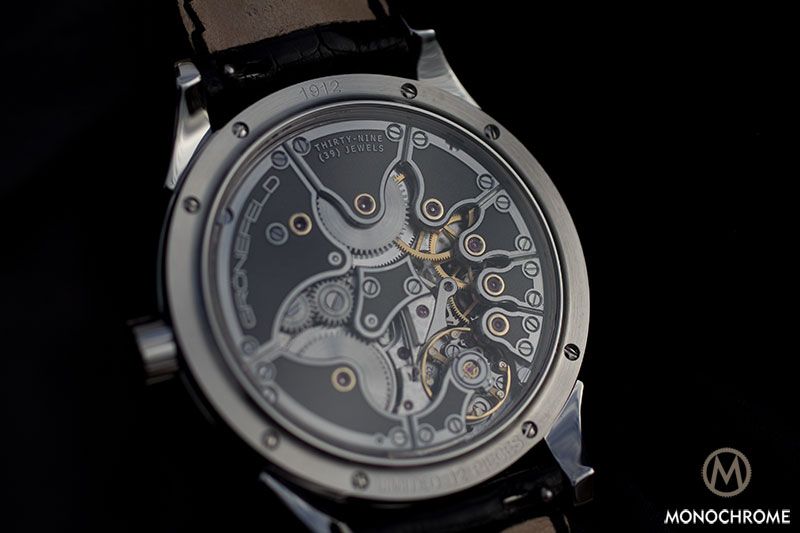
Yes, it’s a beautiful movement to look at but there is so much more than gold chatons, extra large ruby jewels, stainless steel bridges that are angled and polished by hand and a large balance with variable inertia blocks. Maybe you’d expected a swan neck fine adjustment, but in the hands of a good watchmaker, these variable inertia blocks can be adjusted more precise.
The One Hertz has two mainspring barrels, both held in place by their own bridge located on the left and right side of the bridge with the name Grönefeld. The bridge that also tells us that caliber G-02 has 39 jewels, holds the mainspring providing energy for the hour and minute hand. The other mainspring provides its energy to the dead beat seconds.
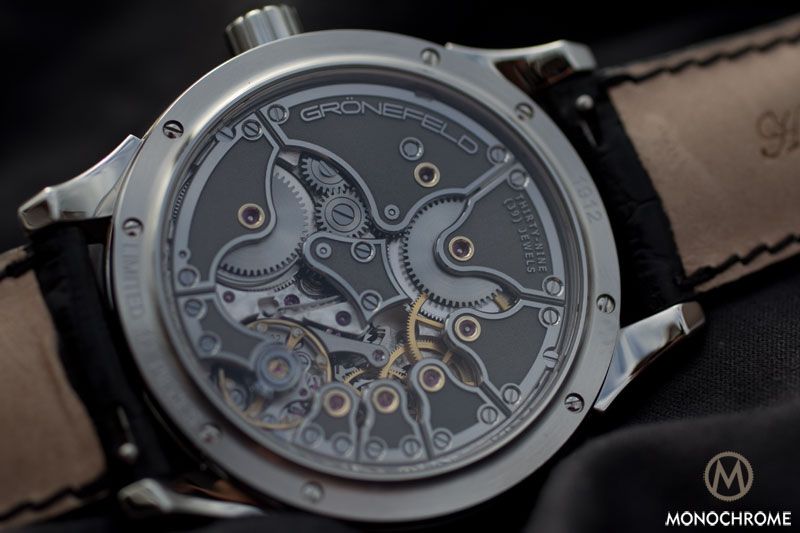
From the hours/minutes mainspring we see several gears, coming from the mainspring and distributing the energy to the balance wheel and escapement. The energy stored in the other mainspring is channeled through gears that are not visible from the back side, but they end in the dead beat seconds cam wheel. This cam, with 30 teeth, is attached to the fourth wheel of the main (hours/minutes) gear train.
This approach has never been used in a wrist watch and is actually the best execution of a dead beat seconds complication and still maintain a perfectly steady chronometric rate.
In order to let both mainsprings unwind at the same pase, the cam wheel is coupled to the fourth wheel of the dead beat seconds gear train by a 3-armed palet fork. The photo below shows the two ruby palets of this 3-armed palet fork stopping the fourth wheel.
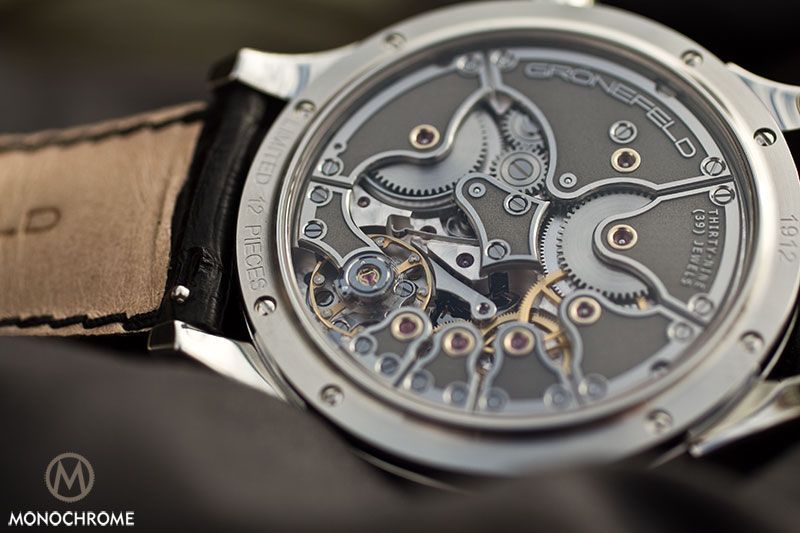
Can you see it? Probably not, but here’s a close-up with red arrows pointing to the two ruby palets of the palet fork.
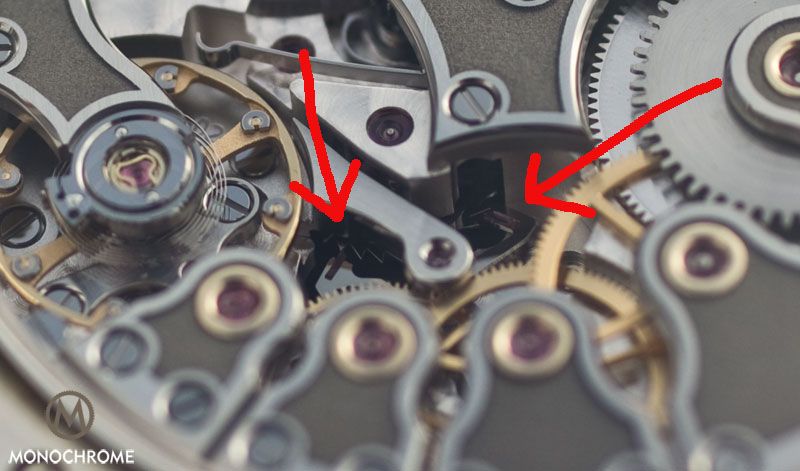
Now I’m wondering if all this helps to better understand the workings of the One Hertz. If not there are always the photos to enjoy the sheer beauty of it. And if your buddies don’t understand the explanation of the dead beat seconds gear train and the coupling with the main gear train, you can always tell them that One Hertz means one beat per second.
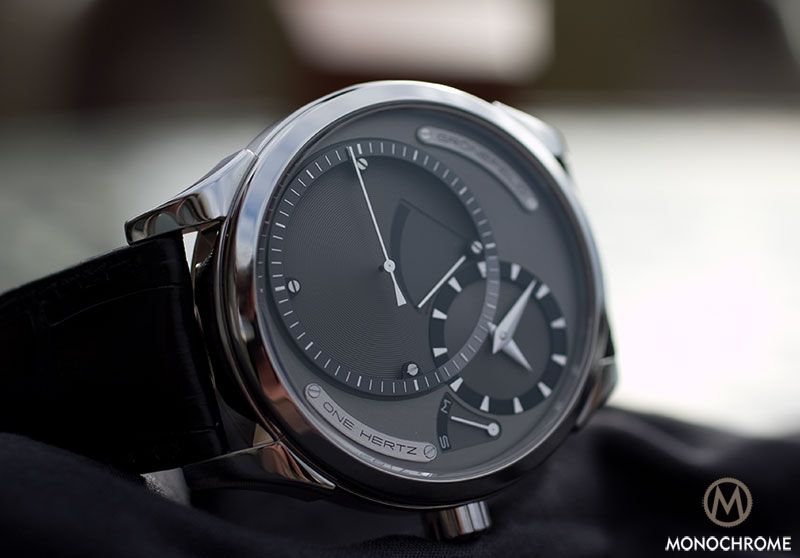
The hour and minute hand are in the upper right corner of the dial and below it is the winding/setting indicator that tells you in which of these two functions is active. A nifty mechanism to change between these functions, is hidden in the crown that only needs to be pushed once to switch between functions. This means no unscrewing and the crown before it can be used and screwing it down afterwards. Simply wind, push once and adjust the time.
Besides its great looks, its impressive dead beat seconds mechanisms and the handy crown, it also wears great. It has a contemporary size of 43 mm in diameter and the front and back are sealed by two sapphire crystals with anti reflective coating. Yes… it’s wearable as well, as the photo below shows. It’s easy to let just a bit of your watch sneak from under your sleeve, so you can see how long you’ve been stuck in that endless meeting…
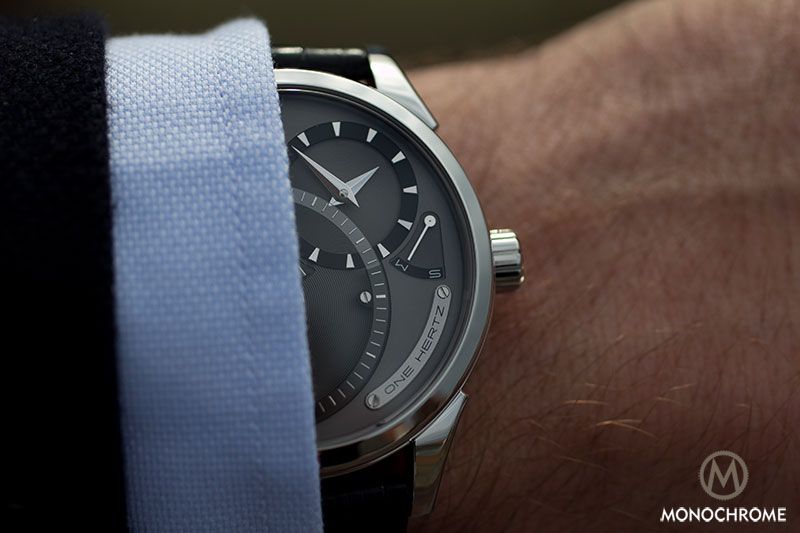
If the meeting really is boring, than maybe showing more of the One Hertz might just bring some spirit to the meeting.
The One Hertz 1912 in stainless steel is sold out. The One Hertz Dune in red gold is (still) available and priced at 49,500 Euro and stay tuned to learn about more Grönefeld news around Baselworld. More info about the One Hertz can be found at the Grönefeld website and official Facebook page.



